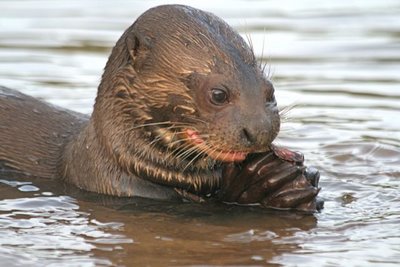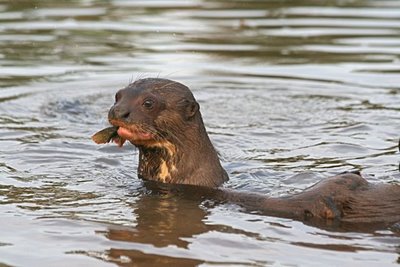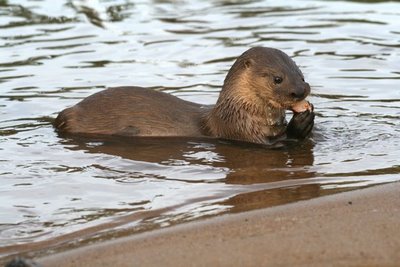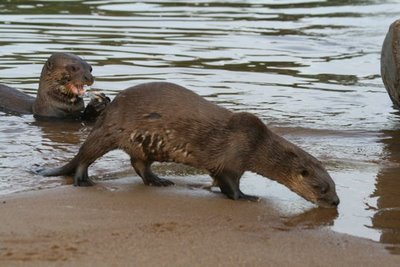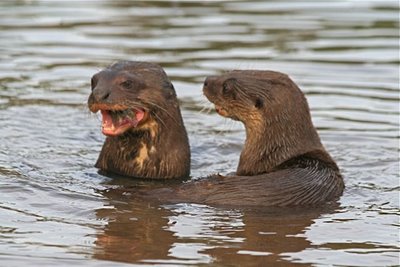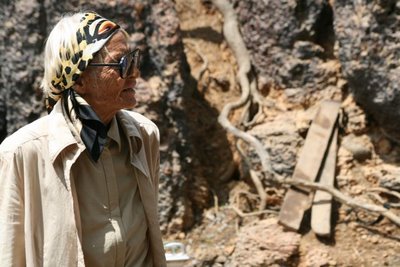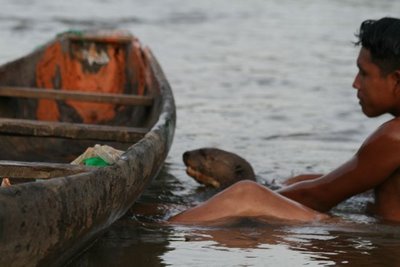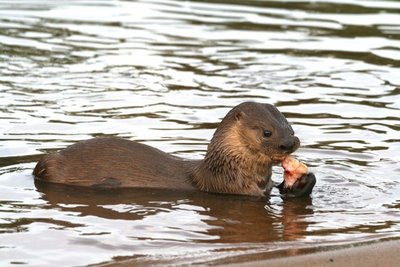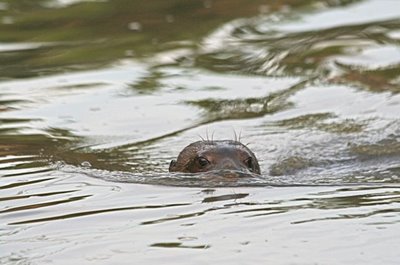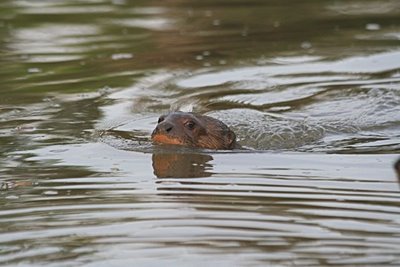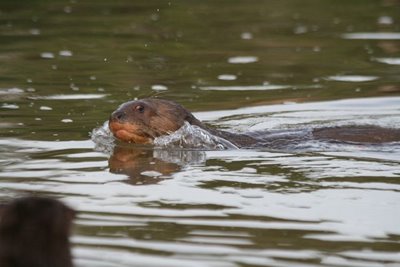Otter Love
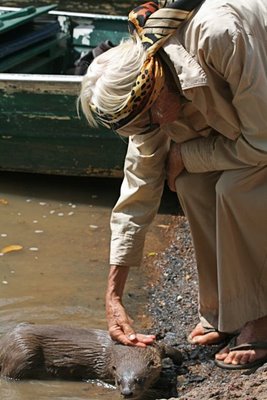
It was clear to me, on watching Diane McTurk interact with the two otters (giant Amazon and Neotropical river) she had raised, that her affection for them runs every bit as deep as mine for my beloved Chet Baker. In raising and releasing these animals, Diane runs a gamut of emotions. Giant Amazon otters are territorial, and though they are endlessly tolerant of family members, they will sometimes kill interlopers. In fact, a lone male giant otter had come to Karanambu and killed at least one of her orphans. Having raised quite a few young songbirds, I know how tough it can be to raise a young thing up, only to see it killed just as it's learning how to live.
We spent a few minutes watching Diane with her otters just before departing Karanambu. Her face glowed with affection as she spoke lovingly to them. They seemed to adore her equally. After all, she was their mom!
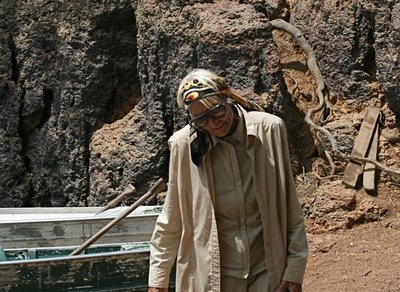 I noticed that she took more liberties with the Neotropical river otter than the giant otter. In this picture, you can see why the Neotropical river otter (the closest to Diane) is Lontra longicauda (long-tail). Diane sneaks a caress of the giant otter while he's occupied.
I noticed that she took more liberties with the Neotropical river otter than the giant otter. In this picture, you can see why the Neotropical river otter (the closest to Diane) is Lontra longicauda (long-tail). Diane sneaks a caress of the giant otter while he's occupied.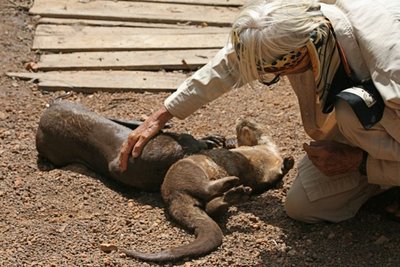 After my minor perforation, I wasn't scratching nobody under the chin, but I had a hard time keeping my hands off the unbelievably silky fur of the otters.
After my minor perforation, I wasn't scratching nobody under the chin, but I had a hard time keeping my hands off the unbelievably silky fur of the otters.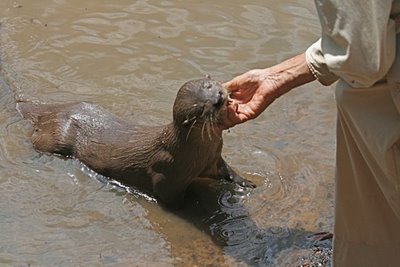 Don't try this unless you're the otter's mama.
Don't try this unless you're the otter's mama.  Canis turdicauda, the Tennessee Turd-tail, at rest.
Canis turdicauda, the Tennessee Turd-tail, at rest.While we're on tails, look at the giant otter's amazing appendage. His Latin generic name is Pteronura, or "feather tail," referring to its flattened aspect.
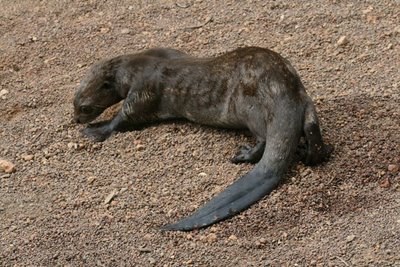 The central "vane" of vertebrae only adds to the tail's feather-like appearance. It's much like a caiman's tail, and it makes a fine propeller in water.
The central "vane" of vertebrae only adds to the tail's feather-like appearance. It's much like a caiman's tail, and it makes a fine propeller in water.The river otter wanted to be in the boat to take the sun with his giant pal.
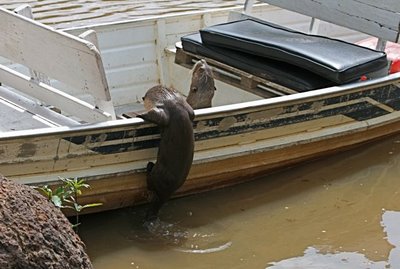 Longicauda helped himself. What does he do with all that tail?
Longicauda helped himself. What does he do with all that tail?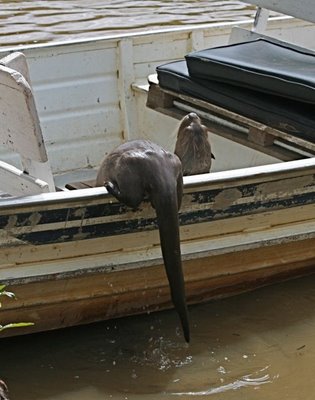 And was soon routed by Mr. Giant Bossy Boots (looking very much like a sea lion here)
And was soon routed by Mr. Giant Bossy Boots (looking very much like a sea lion here)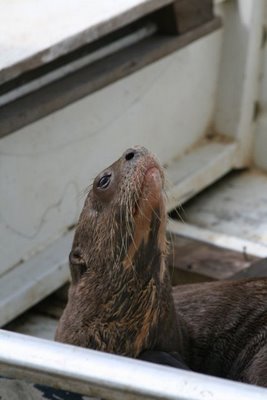 who wanted the boat to himself.
who wanted the boat to himself.
Both otters then repaired to shore, where they rolled over and over in the warm sand. Their fur dried amazingly fast. A very dense, silky underfur traps air and prevents water from ever reaching their skin.
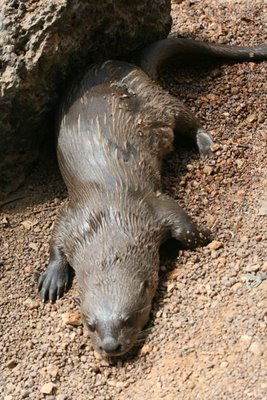 In just a few minutes, the sand and the hot Guyanan sun turned this slick little river otter into a living teddy bear.
In just a few minutes, the sand and the hot Guyanan sun turned this slick little river otter into a living teddy bear.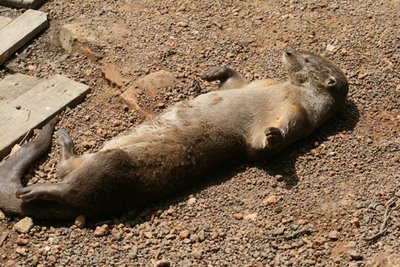
Is it any wonder that so many of us love otters? And their tiny otter junk?
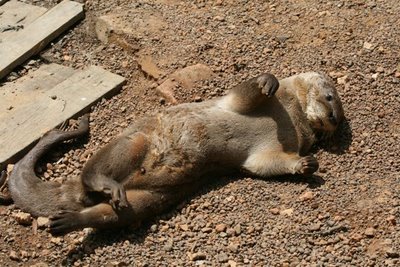 Throughout all our interactions, the giant Amazon otter never ceased to vocalize. To imagine how he sounded, squinch your vocal cords all up and imitate a crying baby, pushing the sound through your nose. Waaaa! Weeee! Weeeeyyyyyyewwwww! Weh!!
Throughout all our interactions, the giant Amazon otter never ceased to vocalize. To imagine how he sounded, squinch your vocal cords all up and imitate a crying baby, pushing the sound through your nose. Waaaa! Weeee! Weeeeyyyyyyewwwww! Weh!!I want, I want, I want!
If he doesn't favor a baby elephant seal here, I'm a monkey's uncle.
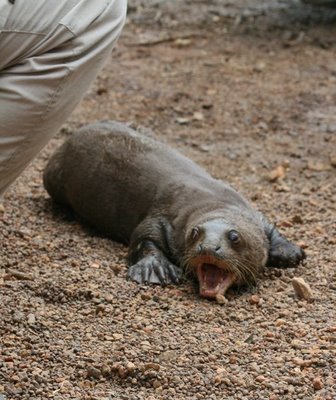
Our last view of Diane, standing on the dock at Karanambu Ranch, looking after her otters.
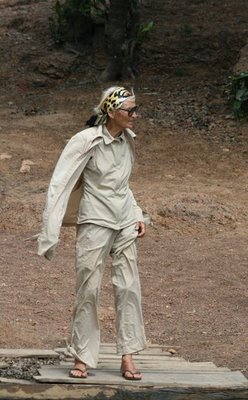
Labels: Diane McTurk, Giant amazon otter, Guyana, Karanambu Ranch, Neotropical river otter

